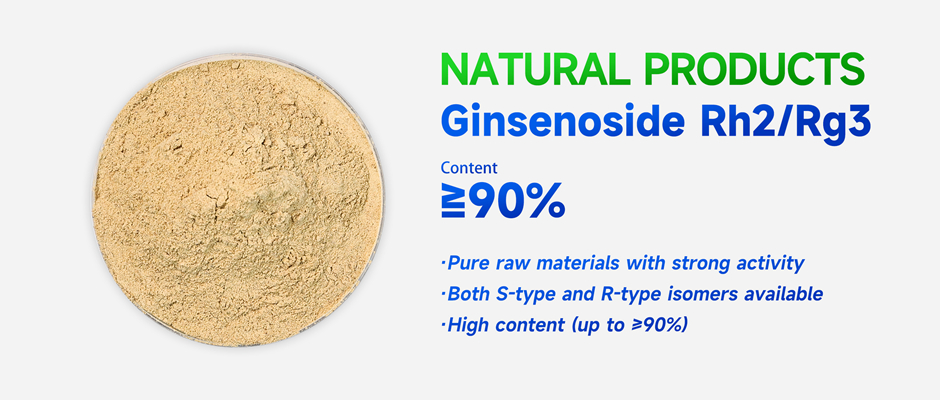
Unraveling Impacts of Ginsenoside Rg3 Treatment on IL-1β-induced Injury of NPCs

Introduction
Intervertebral disc degeneration (IDD) is a frequently seen orthopedic disease, which is accompanied with excessive apoptosis of nucleus pulposus cells (NPCs) and degeneration of extracellular matrix (ECM), with main symptoms of pain and numbness in the waist, legs and feet, as well as inflammation on and around the surface of bone tissues. Strikingly, ginsenoside Rg3, the main active ingredient of ginseng, has been attested to exhibit anti-catabolic and anti-apoptotic effects in IL-1β-treated human NPCs and IDD rats by inactivating the p38 MAPK pathway.
The risk factors for IDD
IDD is generally associated with risk factors such as aging, excessive exercise, working environment, and genetics. As one ages, the amount of water in the body and in the intervertebral discs will be reduced accordingly. Intervertebral discs that lack moisture will lose their elastic function and become hard. Once there is any stimulation or pressure, the intervertebral disc may crack, leading to intervertebral disc injury. For instance, the mechanical trauma caused by excessive exercise and work may accelerate the fragility of disc and exacerbate IDD.
Anti-catabolic and anti-apoptotic effects of ginsenoside Rg3 in IL-1β-treated human NPCs and IDD rats
Ginsenoside Rg3 plays an anti-apoptotic role in IL-1β-treated human NPCs and IDD rats, as evidenced by the down-regulation of pro-apoptosis protein Bax and up-regulation of anti-apoptosis protein Bcl-2 in IL-1β-stimulated NPCs and IDD model rats. Besides, ginsenoside Rg3 represses ECM degradation in IL-1β-stimulated NPCs and intervertebral disc tissues of IDD rats, as attested by the decreased expression of ECM degradation-related factors MMPs (MMP2 and MMP3) and ADAMTSs (Adamts4, and Adamts5).
Ginsenoside Rg3 exhibits anti-catabolic and anti-apoptotic effects in IL-1β-treated human NPCs.
Ginsenoside Rg3 reduces apoptosis and catabolism in IDD rats.
Alleviation of ginsenoside Rg3 in IDD via p38 MAPK pathway
Ginsenoside Rg3 can alleviate NPC degeneration, recover the arrangement of annulus fibrous, and preserve more proteoglycan matrix via inactivating p38 MAPK pathway. In vitro, the fluorescence intensity of p38 is enhanced in IL-1β-stimulated NPCs, yet ginsenoside Rg3 offsets this promoting effect. In vivo, the phosphorylated p38 level is elevated in NPCs and the intervertebral disc tissues of IDD rats, while ginsenoside Rg3 works inversely.
Ginsenoside Rg3 suppresses the IL-1β-stimulated p38 MAPK pathway in human NPCs
Ginsenoside Rg3 inactivates the p38 MAPK pathway in IDD rats.
Conclusion
The anti-catabolic and anti-apoptotic effects of ginsenoside Rg3 in IL-1β treated human disc nucleus pulposus cells and in a rat model of disc degeneration are accomplished by inactivating the MAPK pathway, providing new clues on the treatment of IDD.
Reference
Chen J, Zhang B, Wu L, et al. Ginsenoside Rg3 exhibits anti-catabolic and anti-apoptotic effects in IL-1β treated human disc nucleus pulposus cells and in a rat model of disc degeneration by inactivating the MAPK pathway. Cell Mol Biol. 2024;70(1):233-238. doi:10.14715/cmb/2024.70.1.32
BONTAC Ginsenosides
BONTAC has been dedicated to the R&D, manufacture and sale of raw materials for coenzyme and natural products since 2012, with self-owned factories, over 170 global patents as well as strong R&D team. BONTAC has rich R&D experience and advanced technology in the biosynthesis of rare ginsenosides Rh2/Rg3, with pure raw materials, higher conversion rate and higher content (up to 99%). One-stop service for customized product solution is available in BONTAC. With unique Bonzyme enzymatic synthesis technology, both S-type and R-type isomers can be accurately synthesized here, with stronger activity and precise targeting action. Our products are subjected to strict third-party self-inspection, which are worth of trustworthy.
Disclaimer
This article is based on the reference in the academic journal. The relevant information is provided for sharing and learning purposes only, and does not represent any medical advice purposes. If there is any infringement, please contact the author for deletion. The views expressed in this article do not represent the position of BONTAC. Under no circumstances will BONTAC be responsible or liable in any way for any claims, damages, losses, expenses or costs resulting or arising directly or indirectly from your reliance on the information and material on this website.
